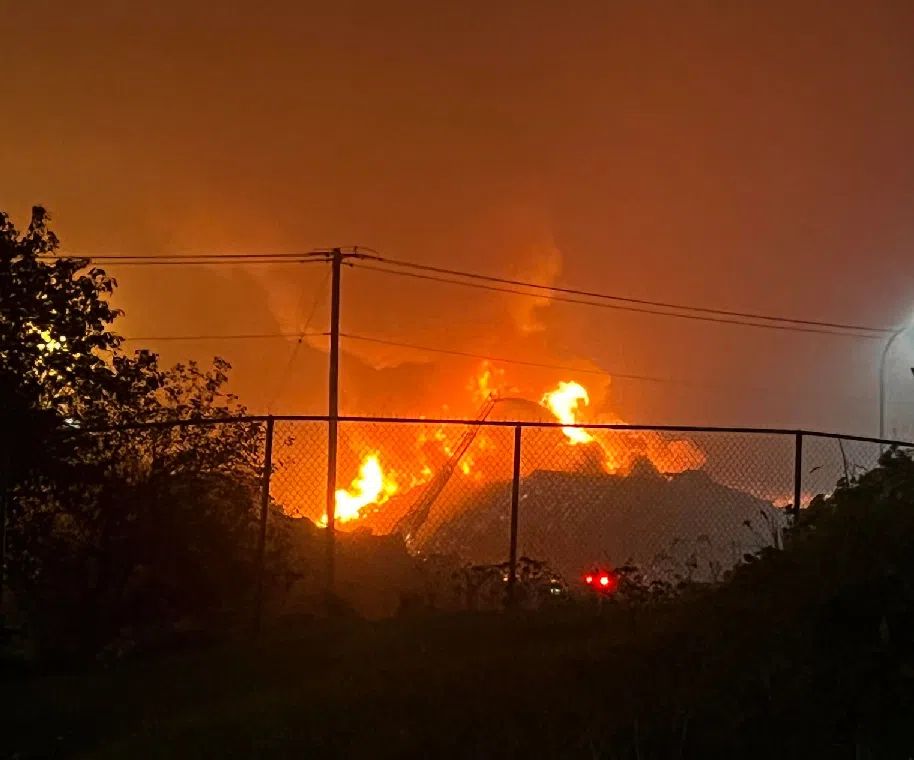Soil testing continues in the Saint John region after the most recent fire at American Iron and Metal’s scrapyard in Saint John.
The fire inside a pile of crushed cars started on Sept. 15 and burned for more than 40 hours before it was fully extinguished.
Billowing smoke, which could be smelled from several kilometres away, caused air quality concerns in the city and beyond.
Dr. Kimberley Barker, the regional medical officer of health, said they are testing soil from several community gardens in the region.
“We’ve sampled 12 sites, nine of those sites would have been impacted by the plume,” Barker told members of Saint John council’s public safety committee on Wednesday.
The three remaining sites outside of the plume are being used as test sites to determine what chemicals may have already been in the soil before the fire, she said.
Barker said CBCL Engineering and Environmental Services will be testing for several “chemicals of potential concern” in the soil
“What we decided to do, together with the consultants, is assume that it was a car that caught on fire full of gas, still tires on, and exponentially decide what chemicals would have been exuded from such a car fire.”
“The [fire] chief kindly pointed out to us that it was probably the equivalent of 10,000 car fires so that just stressed the importance of our decision in terms of the chemicals that were chosen.”
Port Saint John and AIM Recycling have also hired consultants to conduct their own independent assessments, said Barker.
She said the test results, which are due in mid-November, could lead to officials having to replace the soil in the affected gardens.
If the gardens not impacted by the plume come back with positive results, Barker said there would need to be a larger discussion for the city and senior levels of government to decide on the steps going forward.
In the meantime, health officials have said anyone choosing to harvest garden crops should wash and freeze them until the results are known or throw them into the garbage.
Barker said health officials will also investigate the air quality impacts caused by the industrial fire.
“The uptown [monitoring] location, based on it being essentially an industrial park area, has never really had a decent air quality, so to speak, so the levels that are fairly normal in this area are probably elevated compared to what we would want people to be experiencing on a daily basis,” she said.
“But, of course, that specific event did prompt fine particulate matter to be measured on a scale that we haven’t typically seen.”
Barker said her department will also be working closely with the Saint John Regional Hospital to map the number of visits made for issues such as respiratory distress, cardiovascular events, and skin and eye irritation.
Meanwhile, Saint John fire officials are reviewing their overall response to the AIM Recycling fire.
Chief Kevin Clifford told the committee that it is a standard review they conduct after every large-scale event.
Clifford said this is one of the more complicated reviews in recent memory given the length of the operation.
“Expected takeaways from the review include what went right, what went wrong, steps for improvement, lessons learned, and any change in procedures,” he said.
The review will look at the roles of different stakeholders and establish the chronological order of events, among other things.
It will also include a review of communications with command staff and the public communications advisories that were issued.
Clifford said the review’s findings will be presented to council’s public safety committee at its December meeting.





